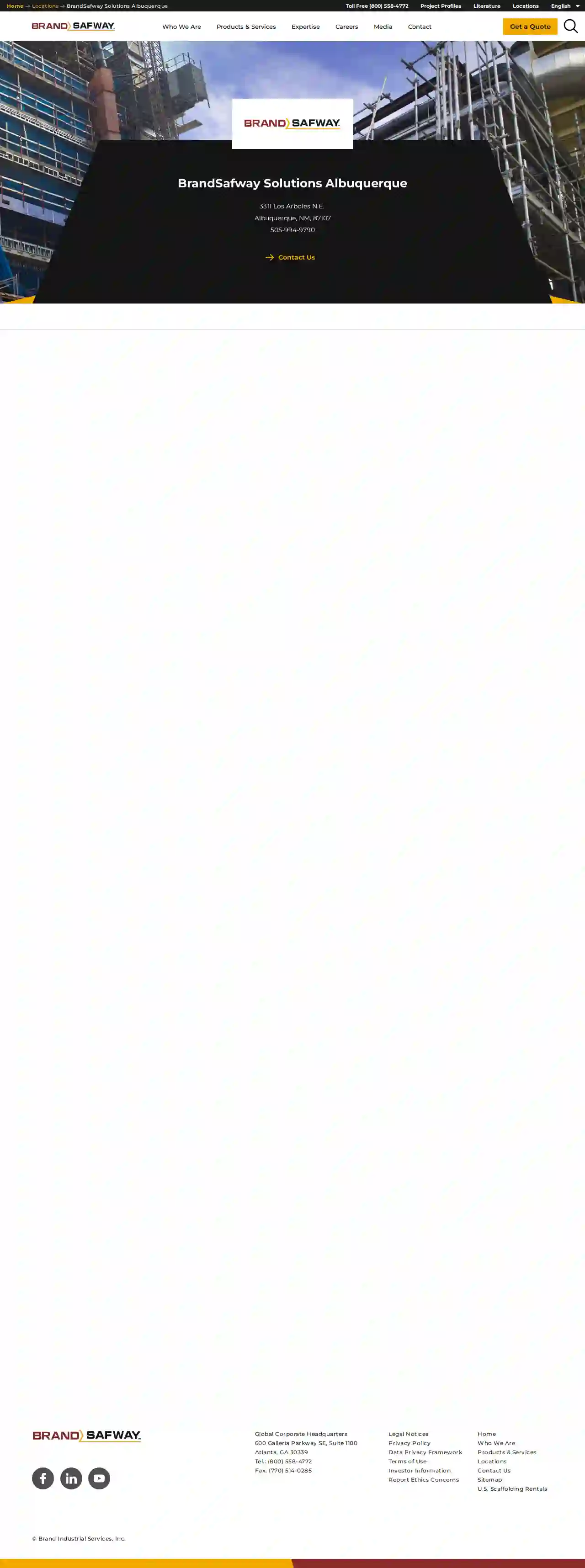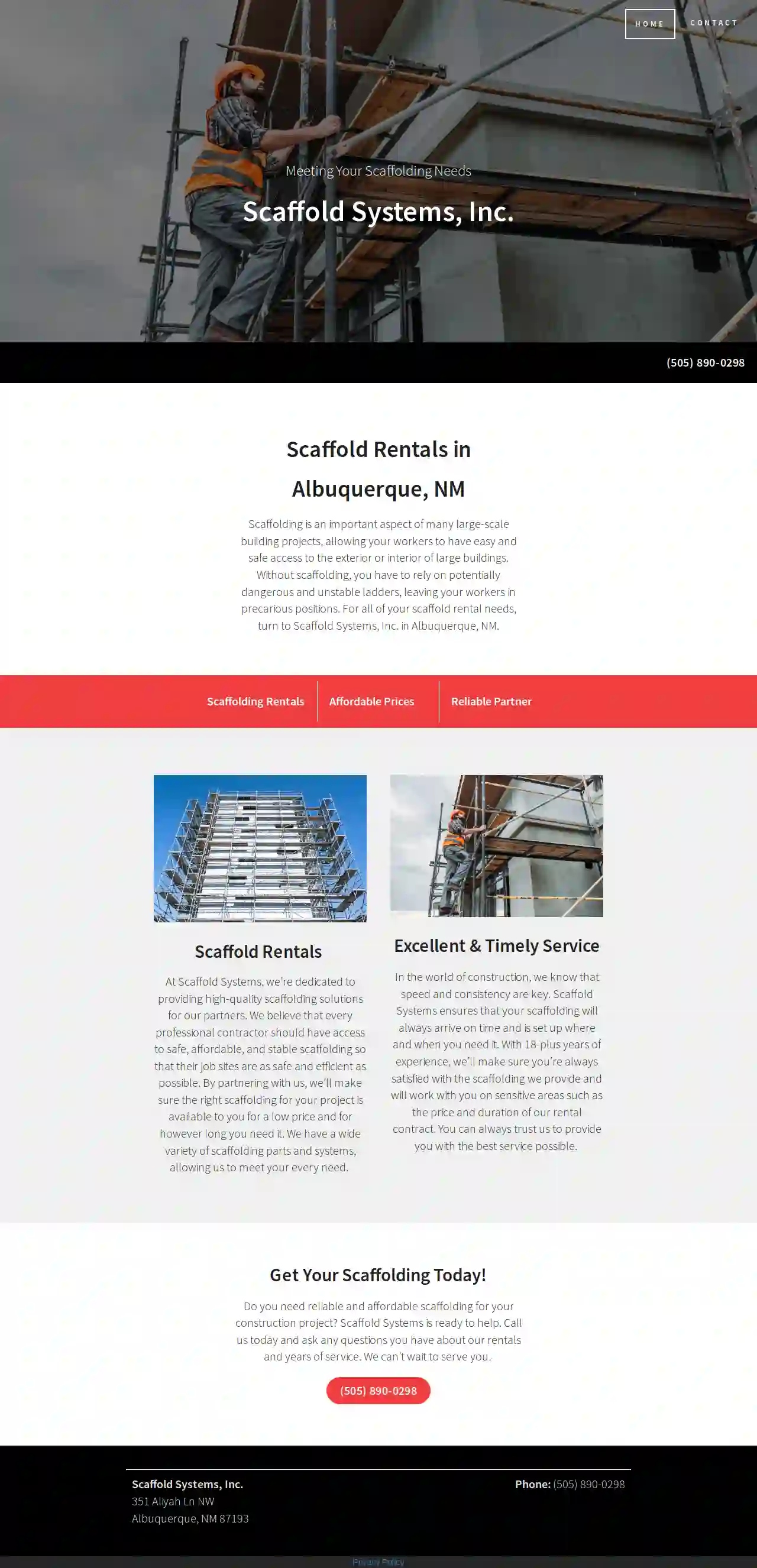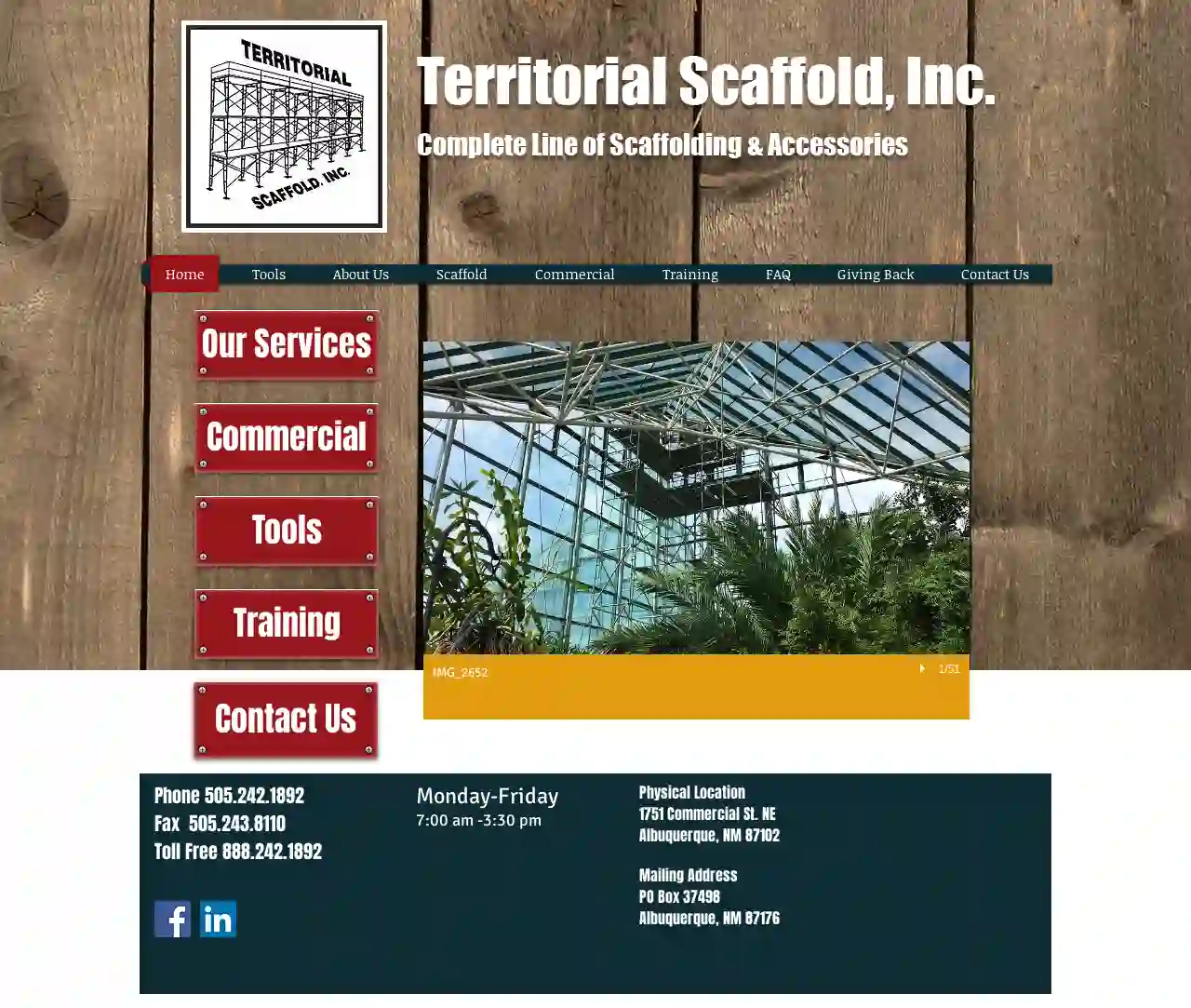Scaffolding Companies Silver City
Find Scaffolding Erectors in Silver City
Receive multiple Scaffolding Builders quotes for your project today! Compare profiles, reviews, accreditations, portfolio, etc... and choose the best offer.

BrandSafway Solutions Albuquerque
4.18 reviews1234 BrandSafway Blvd, Albuquerque, 87102, USBrandSafway is a leading provider of access solutions, including scaffolding, aerial work platforms, and forming and shoring equipment. With a strong commitment to safety, quality, and customer satisfaction, BrandSafway offers a wide range of services tailored to meet the unique needs of clients across various industries. Their team of experienced professionals works closely with clients to understand their requirements and deliver customized solutions that enhance efficiency and productivity. BrandSafway's mission is to provide innovative access solutions that ensure safe and efficient project execution, while maintaining a focus on sustainability and environmental responsibility.
- Services
- Why Us?
- Accreditations
- Our Team
- Testimonials
Get Quote
Scaffold Systems Inc
36 reviews351 Aliyah Ln NW, Albuquerque, 87193, USScaffold Systems, Inc. is a dedicated provider of affordable and convenient scaffolding rentals to contractors and homeowners in Albuquerque, NM. With nearly two decades of experience, they offer a wide variety of scaffolding parts and systems to meet every need. Their commitment to safety, efficiency, and customer satisfaction sets them apart as a reliable partner for construction projects.
- Services
- Why Us?
- Gallery
Get Quote
Territorial Scaffold Inc
4.725 reviewsTerritorial Scaffold, Inc., Albuquerque, NM, 1751 Commercial St. NE, 87102, USTerritorial Scaffold, Inc. is a leading provider of scaffolding and accessories, offering a comprehensive range of services including commercial scaffolding, training, and more. With a strong commitment to quality and customer satisfaction, the company operates from its physical location at 1751 Commercial St. NE, Albuquerque, NM 87102, and can be contacted via phone at 505.242.1892, fax at 505.243.8110, or toll-free at 888.242.1892. The business is open Monday through Friday from 7:00 am to 3:30 pm.
- Services
- Why Us?
- Accreditations
- Our Team
- Testimonials
- Gallery
Get Quote- Al
All American Scaffold & Shoring
11 reviewsAlbuquerque, US- Services
- Why Us?
Get Quote
Over 2,353+ Scaffolding Companies on our directory
Our scaffolding experts operate in Silver City & beyond!
ScaffoldingHQ has curated and vetted the Best Scaffolding Contractors in and around Silver City. Find a top & reliable business today.
Frequently Asked Questions About Scaffolding Companies
- Size and Complexity: Larger, more intricate scaffolding structures will naturally take longer to assemble.
- Scaffolding Type: System scaffolding, with its pre-engineered components, can be erected faster than traditional tube and clamp scaffolding.
- Accessibility: Difficult site access or limited working space can prolong the erection process.
- Crew Size and Experience: The number and skill level of the scaffolding erectors will impact the speed of assembly.
- Project Height and Access: The height of the structure and the accessibility of the working area are primary considerations.
- Load Capacity: The weight of workers, materials, and equipment that the scaffolding needs to support.
- Project Complexity and Shape: The shape and complexity of the structure may necessitate specialized scaffolding configurations.
- Ground Conditions: The type of ground (soft, uneven, sloping) will influence the scaffolding foundation and support requirements.
- Duration of Use: The length of time the scaffolding will be needed can impact the choice of system.
- Budget: Different scaffolding types have varying costs.
- Project Size and Complexity: The height, configuration, and accessibility of the scaffolding will influence the amount of materials and labor required.
- Scaffolding Type: Different scaffolding systems (tube and clamp, system scaffolding, suspended scaffolding) have varying costs.
- Duration of Rental: The length of time you need the scaffolding will affect the overall rental price.
- Location: Labor costs and material availability can differ based on your location.
- Additional Services: Some companies may offer additional services like erection, dismantling, or transportation, which can add to the cost.
How long does it take to erect scaffolding?
Can I erect scaffolding myself?
How do I choose the right type of scaffolding for my project?
How much does scaffolding cost to hire in the USA?
How long does it take to erect scaffolding?
- Size and Complexity: Larger, more intricate scaffolding structures will naturally take longer to assemble.
- Scaffolding Type: System scaffolding, with its pre-engineered components, can be erected faster than traditional tube and clamp scaffolding.
- Accessibility: Difficult site access or limited working space can prolong the erection process.
- Crew Size and Experience: The number and skill level of the scaffolding erectors will impact the speed of assembly.
Can I erect scaffolding myself?
How do I choose the right type of scaffolding for my project?
- Project Height and Access: The height of the structure and the accessibility of the working area are primary considerations.
- Load Capacity: The weight of workers, materials, and equipment that the scaffolding needs to support.
- Project Complexity and Shape: The shape and complexity of the structure may necessitate specialized scaffolding configurations.
- Ground Conditions: The type of ground (soft, uneven, sloping) will influence the scaffolding foundation and support requirements.
- Duration of Use: The length of time the scaffolding will be needed can impact the choice of system.
- Budget: Different scaffolding types have varying costs.
How much does scaffolding cost to rent in the USA?
- Project Size and Complexity: The height, configuration, and accessibility of the scaffolding will influence the amount of materials and labor required.
- Scaffolding Type: Different scaffolding systems (tube and clamp, system scaffolding, suspended scaffolding) have varying costs.
- Duration of Rental: The length of time you need the scaffolding will affect the overall rental price.
- Location: Labor costs and material availability can differ based on your location.
- Additional Services: Some companies may offer additional services like erection, dismantling, or transportation, which can add to the cost.